Violence in Lord of the Rings
Frank Weinreich
“Fight!” said Frodo. “Well I suppose it may come to that.”
J.R.R. Tolkien, The Return of the King
Introduction
My love for fantasy began at an early age, well before my tenth birthday, and it began with a certain lust for battle and adventure. I started with John Norman, Alan Burt Akers and stuff like that, and it was for the hack ´n slash they provided, not for fairyland, that I read those books. But nearly next in line came The Hobbit and Lord of the Rings, and, amazingly enough, I made it through the chapters „Concerning Hobbits“ and „A Long Expected Party“ without the slightest approach of boredom. I did not realize that this was quite amazing at that time, but in hindsight, at age twenty or so, I began to wonder how this could have been at that time. Much later I read the following quote from Matthew Dickerson and found that this must have been what had touched me even as a child:
„These are the things – friends, sunlight, grass - that are really important in the tale; this, and not war and battles is the stuff of life: the stuff that counts.“ (Dickerson 27)
In the subsequent chapters of his book Following Gandalf Dickerson goes on saying these things. And Dickerson more than one time points out, that Tolkien is very restrictive in his descriptions of fighting, war, and violence (cf. 23, 33, 88 and more often). He gives examples for that, but does Dickerson’s claim really hit the mark? That was a question I asked myself quite some time while reading his book. Following Gandalf was published in 2004, one year after the release of the last one of Peter Jackson’s movies, and this interpretation of Middle-earth influenced my reading of Dickerson quite heavily, since the screenplays threatened to change my whole experience of Lord of the Rings. On one hand then there was Jackson’s hack ´n slash which put me well back into my Norman-and-Akers-experiences, on the other hand there was Dickerson’s claim of a restrictive use of violence in the book. Curiosity arose: Who’s right?
There is a way to lend a certain kind of objectivity to the study of literary content: a quantitative analysis of content according to a transparent system of categories. Since 2004 I waited for such an analysis to be published, but somehow nobody seemed to be eager to do the dirty work. So when the DTG came up with the topic of this year’s seminar I felt somehow obligated to grab the book and start counting. So I added the 2.5 million letters that make up the Lord of the Rings and am now able to present first findings on the amount and types of violence that can be found in the Ring-Trilogy. And some light will also be shed on the overall composition of Lord of the Rings.
Theoretical framework
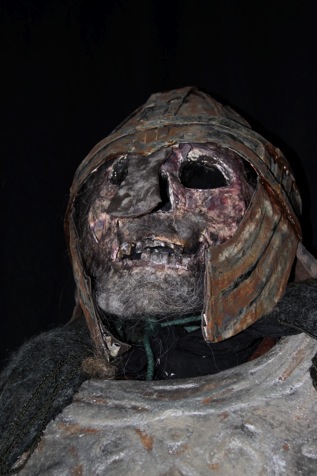
Violence, of course, is a topic in Lord of the Rings
Violence
The present content analysis of Lord of the Rings focusses on the amount of violence in the novel itself. Violence for the purposes of this study is understood as in the definition of violence given by the World Health Organization (see below). I wish to point out in advance that there is a difference between this study and the usual media violence research as it is undertaken in the last fifty years. Media violence research (cf. Bonfadelli 20-23; Moser 175-180 and 184-192; Vollbrecht 146-175; Weinreich Medieneinflüsse) usually focusses on cause and effect relations attributed to the consumption of media. More precisely it commonly can be understood as research that nearly exclusively deals with the consumption or use of movies, TV and computer(games). This is not the focus of my study. Media violence research has to undertake thoroughly designed empirical studies to try to give any valid statements about the effects of violence in the media. Multilevel-design and a combination of questionnaires, observation and testing has to try to take into account the various dimensions that violence can have for the audience which is exhibited to open as well as hidden aspects of violence and its structural embeddence (cf. Theunert 1997). It follows that a content analysis in itself does not allow for any conclusions to be drawn about the effects of the content analysed. But that is not the point here. My points are first to describe the amount of violence within a certain narrative in quantitative terms, second to point out the types of violence the reader encounters in the book and third to compare the violent with the non-violent parts of Lord of the Rings.
Nonetheless it has to explained what is meant by violence in the Lord of the Rings. In philosophy violence is mostly understood as an instrumentally applied force (Arendt 47), whose use is always connected with certain ethical aspects like morality, justice, legislation and so on (Benjamin 29pp, see esp. 29 ). Violence not only encompasses the use or suffering of physical force or power but the widest range of harm that can be done to somebody. The sociologist and principal founder of the profession of peace and conflict studies, Johan Galtung, has developed the most influential theory of violence which understands violence as a harmful manifestation of power. Thus violence according to Galtung includes personal violence as physical or psychological violence against people (or other living beings) as well as structural violence which may manifest in uneven social relations stemming from the exertion of rulership, appointment of roles and also unfair distribution of goods and opportunities. Violence in this sense can be understood as everything that is opposed to the definition of health according to the World Health Organization (WHO Health) as adopted in June 1946: „Health is a state of complete physical, mental and social well-being and not merely the absence of disease or infirmity.“ In the sociological discussion of violence this usually excludes natural diseases, accidents and catastrophies. For the purposes of this study I also count as violence only acts or threats that are performed by sentient beings which are or could be harmful to other sentient beings.
While a wide ranged definition of violence is very enlightening and useful in the criticism of social relations, politics, economics and so on, it goes too far for the purposes of the present study. Therefore I leave out the scrutiny of structural violence and limit the categories of violence to the working definition of the World Health Organization. [Klick]Violence as defined in the World Report on Violence and Health means: „[Violence is] the intentional use of physical force or power, threatened or actual, against oneself, another person, or against a group or community, that either results in or has a high likelihood of resulting in injury, death, psychological harm, maldevelopment, or deprivation.“ (WHO Violence).
Other than in having to take into account the whole range of dimensions in which violence can appear, as is considered in Galtung’s structural approach, Lord of the Rings can be scrutinized by concentrating on occurrences of interpersonal violence as is depicted in Figure 1 below. The dimensions given were looked after, but violence in the narrative almost exclusively appears as interpersonal violence in communities of acquaintances (seldom) or strangers (mostly) and it consists of physical and psychological violence, very few deprivation or neglect and does not deal with sexual violence. 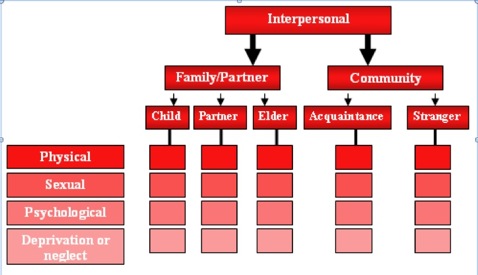
(Fig. 1: Typology of interpersonal violence, WHO 2009)
It has to be noted that the given definition of violence cannot be assumed to be equal to Tolkien’s understanding of violence. The definition was developed while Lord of the Rings was written. But what I am interested in is how todays readers read and understand the book. Which is, by the way, what usually stands in the focus of interest of media violence research. So right now I do not take into account contemporary theories of violence from Tolkien´’s days.
System of Categories
The system of categories consisted of three basic categories with differentiated subcategories. The basic categories were content that is classified as „Non-Violence“, „Violence“ and as a third main category, labeled „Inbetween“, under which fell descriptions, moments, or scenes of tension but without mention of actual violence or the direct threat of violence. Examples for this category are longer parts of the walk through the Old Forest undertaken by Frodo, Sam, Merry and Pippin, or the description of Aragorn, Legolas and Gimli on the Paths of the Dead.
The main categories were divided in more meaningful subcategories. The category „Non-Violence“ was divided in two greater sub-categories, „Descriptions“ and „Interaction“. These sub-categories were then divided into more meaningful parts. The main category „Violence“ was divided in actual violence on the one hand and seven categories which deal with violent from a distance. (See Fig. 2 for a graphic representation of the basic system of categories.)

Fig. 2: System of Violence, basic
Methodology
I will go into the methodology in a little more detail not only for reasons of due transparency but also because I wish to encourage you to pursue the topic of content analysis in Lord of the Rings for yourself. There are many, many aspects that wait for further studies, and perhaps some of you will carry this work further.
Analysis of content
The analysis of content was developed as research method that should yield objective, systematic and quantitative data of the content of communication. Content analysis should reduce subjective interpretations as far as possible (Früh 50ff.). The bare contents of communication - in this case ,contents of communication‘ means the topics that are told in the Lord of the Rings - are coded according to transparent system of categories. The original claim for objectivity is not valid, but still the method calls for a systematic and intersubjective reproducable collection of data according to a transparent system of categories, by which the method „stands or falls“ (Berelson 147).
The system of categories as heart of the study has to be developed in orientation to a theoretical approach. In this case that has been the restricted theory of violence according to WHO as is explained above. The categories are laid out as can be seen on the screen. As has been said, they were mostly derived from the WHO-definition of violence as „intentional use of force or power against persons or communities“. Everything that does not fall under this category is declared as non-violent content. Violence in itself was differentiated and should be coded accordingly.
Besides the main topic violence it was my goal to also identify the other contents that are found in Lord of the Rings, though not as detailed as violence, at least for now. 
Fig. 3: System of categories - non-violent descriptions
Non-violent portions of the text were distinguished into descriptions and interactions. The descriptions were then subdivided as is given in figure 3. Descriptions of architecture, by the way, fall under descriptions of nature. Singing and poetry, of course, does not inculde verse that tells about violent topics.
Fig. 4: System of categories - non-violent interactions
Interaction was coded as is given in figure 4. Planning without violence encompasses all deliberations which deal with what is to do, as long as it has nothing to do with violence. The talk about whether going over or below Hithaeglin would be an appropriate example. Miscellanous talk means all sorts of talk which does not center on certain topics but consist of various topice or chit-chat. This kind of interaction serves the establishment of a relation between reader and protagonists more than driving on the plot. 
Fig. 5: System of categories - inbetween, but still not violent
Inbetween (fig. 5) is a category that is in essence non-violent. But since it mainly consists of uncanniness, suspense or tension it seemed plausible to set it up as a main category. I am not decided whether I will count it as a third subcategory of non-violent in the future. This will not change the outcomes as they are reported below in the results section. Examples for tension and uncanniness are parts of the walk in the Emyn Muil or the Paths of the Dead.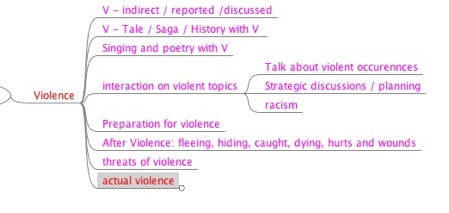
Fig. 6: System of categories - violence
Violence was divided in actual violence which is characterized by the vivid description of violent occurrences (see fig. 7) and in other parts of the text which deal with violence as a central topic, but not directly describe violent actions as is given in figure 6. The threat with violence, verse on war and battle, or the events before or after a fight are examples for that.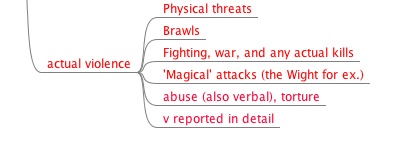
Fig. 7: System of categories - actual violence, vivid descriptions of violence
Actual violence was coded as shown in figure 7. Also here a wide understanding of violence was imposed. The talks between Saruman on one side and Théoden, Gandalf and others after the fall of Isengard, for example, are counted as actual violence, since Saruman here tries to attack and win over his audience by magic. This, of course, is open to debate, but makes sure, on the other hand, that no actual violence is overlooked.
Fig. 8: System of categories - overview
Figure 8 provides an impression of the structure of the system of categories. I apologize for this being (nearly) unreadable, but it should just show the structre. For the contents compare figures 3 to 7, please.
The system of categories underwent a peer discussion and was modified due to the remarks of the peers. After performing this discursive validation of the system intercoder-reliability was tested for. This was done for the purpose of lending more stability to the system of categories. But since I was not able to delegate the coding process as a whole or to employ one or two other coders, the coding itself was performed by one person only, which may result in a lack of reliability when reviewed. Nonetheless intercoder-reliability, as it was tested with two coders on two chapters from The Fellowship of the Ring and Return of the King, was measured .77, which is a trustworthy result indicating a reliable system of categories.
Preparation of the text
Basis for the analysis was the paperback edition by HarperCollins from 1993. The edition was digitized, run through a character recognition program (Omnipage V 14.0) and brought into a Word-document, which than was read and corrected were computer or software had made mistakes while processing the text.
The corpus examined did not encompass the whole text usually printed with Lord of the Rings. Foreword, the chapter „Concerning Hobbits“ and all Appendices were deleted. Runes and Elvish scriptures were omitted. The object of this study is just the text of the ongoing story without any additional information. The reason for that is that further information is given in style and wording which differs from the story itself and therefore would be able to bias the analysis. That left me with a total amount of nearly 500.000 words or 2.5 million characters for the text of Lord of the Rings.
A problem occurred concerning the counting of characters. Word provides a statistic feature which allows to count characters, words, lines and paragraphs. Alas, this feature does miscalculations and comes up with a differing amount of all its counts every time a file is opened anew. The calculations regarding character count, which are the basis of the following analysis, differ on a level of 0.005 to 0.05 per cent and are evenly distributed throughtout the whole corpus and regardless of the amount of text counted. The miscalculations are therefore neglectable since they are not able to produce statistically significant differences in the outcome of the quantitative content analysis.
The miscalculations are annoying, regardless of their statistical insignificance. So a trustworthy method of counting is called for and would be very much appreciated.
Concerning replicability of the analysis and further quantitative research almost all problems due to miscalculations can also be avoided using a fixed page set-up. Therefore the pages of the corpus of Lord of the Rings were formatted with a width of 53 characters per line, no hyphenation, non-proportional typescript, Courier in this case. Approximately 50 lines were set on each page, but from time to time one line more or less could not be avoided. These measures provide a dull layout, but are the only way to give you a chance to revise or modify the study I undertook. This set-up of the document also compensates for the miscalculations of the statistic feature because future reviewers or researchers do not have to rely on this feature and can perform comparing analyses by sticking to standardized lines. Since every chapter begins anew with line 2 (leaving out the chapter headings) a possible slip in lines in one chapter is corrected with every new beginning of a chapter. This slip of line may occur due to OCR-problems in the recognition of blank spaces. I used Omnipage V. 14 for character recognition and noticed that sometimes the space between quotation marks and character was interpreted as blank space. This results in neglectable miscalculations but may, at the end of lines in very few cases lead to an additional line consisting of one quotation mark only. Thus a line was added which another OCR-program would not have added and so there may be one or two additional lines per chapter, which over the whole corpus would lead to increasing differences in line-counts. Beginning every chapter anew avoids this hypothetical problem.
The lines were given numbers, beginning anew with every chapter. Every blank line was deleted, no indents were allowed. Since the citations are depending on the line number per chapter that circumstance does not matter and cited texts can be found only by their line, chapter and book. The coded text as marked in one of five colours in accordance with the colour used in the system of categories given above. That produced an image of the text as is given in the picture below.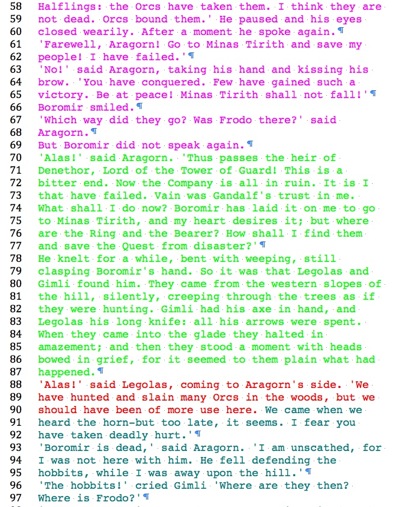
Appearance of the text after coding, an example from „The Two Towers“
Citations in the Excel-sheet - which can be downloaded in the download-section of polyoinos - are given in Volume, number of the chapter and number of line(s). „III, 1, 333-345“ therefore means: Lord of the Rings Book 3, being the first part of „The Two Towers“, Chapter 1, bearing the title „The Departure of Boromir“, Lines 333-345.
Prepared in this way I came out with three documents of Lord of the Rings - The Fellowship of the Ring / The Two Towers / The Return of the King - with approximately 1.000.000, 825.000 and 720.000 characters which amounts to a total of a little more than 2.5 million characters.
For a replication, revision or further examination of the text it is recommended to follow the preparational steps described. I cannot, of course, publish the digitized text. The Excel-sheets with my calculations are published under a Creative Commons License. It therefore is possible to calculate further analyses or hit me on the head with my own numbers where I made a mistake.
Results
The following results are just a few descriptive first impressions out of a much greater number of possible analyses. But even these first results yield interesting information and encourage for further and deeper analysis to which everyone is invited.
Basic data 
Table 1: basic data
Descriptions of actual occurring violence are also in the tables given in red.
Basic data: content inbetween
The material coded as “Inbetween” is of mostly uncanny or tension building nature were protagonists are approaching dangerous situations without an immediate threat of violence or actual violent occurrences. The main category “Inbetween” contributes 300.000 characters or 12 % to the whole corpus. One could very well argue that this content should not be regarded as main category but count it as subcategory of “Non-Violent”. It than would amount to 18.5 % of the non-violent portions of Lord of the Rings; regardless it constitutes 12.5 % of the whole corpus. For the moment I will leave this undecided and also will not go deeper into the findings of “Inbetween”, as I explained above.
Basic data: non-violent
However, non-violent content makes up 68 % per cent of the narrative, i.e. 1.7 million characters of the whole corpus consist of the main category “Non-Violent”. The main category “Non-Violent” (with “Inbetween” omitted) was divided into a first set of sub-categories, labelled “Descriptions” and “Interaction”. These are nearly of the same extent, 845.000 to 843.000 characters, so descriptions and interactions each roughly make up a third of the whole of Lord of the Rings.
The descriptive part of the narrative consists mainly of the depiction of travel (18.7 % of the whole corpus) and the portrayal of people and customs. The descriptions of landscapes and architecture make up a little more than 10% of the descriptive part (which is about 3.5 % of the whole corpus). Reports of events or historic occurrences and singing and poetry without violence amount to a lesser extent of approx. 6.8 % for reports and 3.7 % for poetry (which is about 2.3 % and 1.2 % of the whole narrative).
Table 2: basic data - descriptions
The descriptive part of a tale or narrative in fantasy is responsible for the creation of depth in the imaginary world and its occurrences (cf. Weinreich Fantasy 24pp.). If these descriptions are imaginative they allow for the sense of wonder on the side of the reader and for the willing suspension of disbelief (Coleridge 169) that make up the fascination of the genre. Sheer numbers do tell of course nothing about the quality of the descriptive part of Lord of the Rings, but they show at least that Tolkien cared about giving depth and background to Middle-earth. As is with all further analysis, a more useful appreciation of the quantitative analysis can only be provided if a comparison to other novels, movies and fantasy products is available. In this sense, the present content analysis can be not much more than a first step.
The other half of the non-violent part consists of the interaction between the people in Middle-earth, insofar as they are not concerned with topics of violence and war. The interaction can be divided roughly into miscellaneous talk and chit-chat, which covers more than 50 % of all interaction. General councils add another third, while the distinctive planning of measures, approaches and strategies (as long as they are not strategies for fights or battles) make up only 6% of the interaction. Lastly a few other talks with certain topics like ethics, romance, politics are to be found. These talks include romance, which with 18.000 characters covers less than 1 % of the whole story. That could be an all time low for the genre.
Table 3: basic data - interaction
While on the one hand interaction in narratives has to drive on the story, on the other hand it has to illustrate the characters and give flesh to their bones. Thus interaction plays a great part for the ability of the reader to relate to the protagonists or even be able to identificate themselves with the characters. This is especially true for those portions of the interaction which do not have the main task to keep the story going. Planning and council tells mostly about the development of the plot, while miscellaneous talk may also do this to a certain extent. But foremost these parts portray the characters which are talking or interacting somehow. It is thus presumably a certain strength of Lord of the Rings that nearly 20 % of the whole story serves the purpose to build a relation between protagonists and readers.
Basic data: violent content
The violent content was divided first into the actual description of violent occurrences which are depicted mostly as ongoing war and fighting, but also including actual threats, vivid reports, abuse and harmful magical influences. Second violence related material was coded as distant depiction of violence.
The validity of this distinction can be questioned. But with regard to the question of how the reader experiences Lord of the Rings it makes perfect sense to distinguish thus. There is a differing quality even in the experience of fictitious violence. Take for example a dry report of an ambush to Osgiliath, which tells only of the loss of some dozen soldiers and the bridge over the Anduin, and compare it to the vivid description of the fight on the walls of Helm’s Deep. Certainly the experience differs. Thus one can argue that what affects the reader as violence is only actual fighting, threat and abuse. If one chose to argue such, it is by the way not important how the violence depicted affects the reader – whether he suffers compassionately or whether he is inflamed and aggressive.
The difference in the extent of violence in Lord of the Rings if coded thus is, however, great. The whole violent material, as I chose to code it, amounts to 20 % of the corpus, actual and vivid fighting and violence amounts to ‘only’ 8.2 %.
The descriptions of actual violence were divided in fighting, magical attacks (or defense), vividly reported violence, actual physical threats, abuse and brawls. Two thirds of the amount of actual violent material are descriptions of fighting. If one adds the detailed reports of violence, which are reports of fighting and war, the descriptions of fighting amount to more than 80 % of the violence. Neither brawls, nor threats nor magical attacks (the latter could also be added to the fighting) reach much more than a share 5 %. Interestingly the descriptions of abuse, which seem not to be likely to glorify violence and war, amount to 10 % of the actual violence.
Table 4: basic data – actual violence
There is more diversity to the violence over all, than can be observed on the part of actual violence as described in table 4. Besides actual violence, which amounts to 41 % in the violence department of Lord of the Rings, there are 9 other sub-categories (see table 5 below).
First there is reported, but not vividly depicted violence. This can be divided in historic reports, like for instance the tale of the fall of Nûmenor, and in reports of contemporary violence on the other hand, as is the case when Éomer tells about the death of Théodred. This distinction is important since historic reports lend more depth to the fictitious world Middle-earth and have thus not only an explanatory and story-driving moment. Then there is interaction on violent topics to be found and the preparation for violence as in the waiting for a battle. Another point is “threats”, which I distinguish from threatening scenes which fall under actual violence. Threats are situations in which violence may burst out under certain circumstances, while a threatening situation is in itself violent. A threat of possible violence to occur is inherent for example when Pippin bids Beregond to stop Denethor’s self-destruction. A threatening situation is given for Bill Ferny and the ruffians when the Hobbits scare them off with nearly using physical violence. Two other points are interactions with racistic expressions, and singing and poetry including violent topics, as in the marching song of the Ents.
A very important last aspect of violence are situations which occur after actual violence has happened. These are situations in which people may be wounded, may be dying, may flee or may be caught and imprisoned. The importance in that lies in the possibility that these situations may illustrate suffering and other anti-violent aspects, which show the ‘dark side’ of violence, where violence is not entertaining anymore but shows its true face of hurts and grieves. Therefore scenes after violence were distinguished in situations which emphasize suffering and those that do not.
Table 5: basic data – violence over all
Interesting findings in the observation of violence overall in my opinion are the following ones. First there are comparatively few historic reports focussing on violence, despite the violent history of Middle-earth which at the time Tolkien wrote Lord of the Rings was more or less fully developed. But Lord of the Rings gives the reader the impression of a rich historic background – obviously therefore violence and war are not that important for the background of the story.
Also quite amazingly is the little interaction, i.e. talk, on violence: 25.000 characters. Compare that to the 840.000 characters of interaction overall. To a lesser extent the same is true for singing and poetry: 5.000 to 33.000 characters despite the common tradition in saga and legend to use poetry to tell of mighty deeds done well.
The last point I want to emphasize is the point of suffering when it comes to violence or in its aftermath. Situations after fights are in majority scenes of hurts, grieves and suffering as is shown in table 4. I also took another look at the section actual violence and sorted out the parts “fighting” and “magical attack”. I came out with 150.000 characters or 6 % of the whole corpus. These pieces were distinguished into fights were the heroic moment stands in the foreground and fights were suffering is emphasized. 
Table 5: complementary data: fighting distinguished
To this result one also should add the nearly 1 % of torture and abuse depicted in Lord of the Rings which also is very unlikely to glorify violence. This first distinction of violence shows that Tolkien was well aware of the bad consequences of violence and that he was not in the least inclined to spare his reader these experiences.
Conclusion
I want to close this first overview of an analysis of content of Lord of the Rings at this point without going into the interpretation of the data presented. This, I hope will be the topic of discussion right later on.
Three closing remark may be allowed, though. As to the question posed at the beginning of this study, the question of whose interpretation of Lord of the Rings hits the mark, I think that Jackson’s screenplay is not more than a quite entertaining piece of action-movie, adapting motifs from Lord of the Rings, while Matthew Dickerson’s Following Gandalf is a highly intelligent observation of what the most important narrative about Middle-earth really is about.
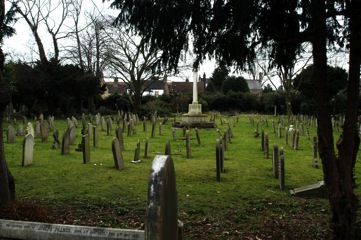
Tolkien knew what violence is about ...
Second, even the impressions of the sheer numbers of violent and non-violent portions of Lord of the Rings show that violence, in the first place, is not the ruling topic in the narrative though Lord of the Rings is the book on the “War of the Ring” (cf. Weinreich Ethos 120). And, third, were violence is made explicit, it is dealt with in a differentiated way. There is of course heroism and northern spirit. But there is also suffering, wounds a grievance. Tom Shippey , it seems, is right when he claims that Tolkien’s narrative is “a war-book, also a post-war book, framed by and responding to the crisis of western civilisation” and that the author belongs in one group of writers with William Golding, George Orwell, Kurt Vonnegut and others of that kind (Shippey 329). Lord of the Rings is not the same as Erich Maria Remarque’s All Quiet on the Western Front but it has much more in common with that, than with Ernst Jünger’s Storm of Steel and it definitely has very little in common with the hack ´n slash of John Norman and Alan Burt Akers. And that may very well be another piece of the mosaic that explains the success of this great tale.
Please download the Excel-sheet with the raw data from here.
Bibliography:
Arendt, Hannah. Macht und Gewalt. München: Piper, 1993
Benjamin, Walter. „Zur Kritik der Gewalt“. Zur Kritik der Gewalt und andere Aufsätze. Frankfurt/M.: Suhrkamp, 1965. 29-65
Berelson, Bernard. Content Analysis in Communication Research. Facsimile of 1952 Edititon. New York: Hafner, 1971
Bonfadelli, Heinz. Medienwirkungsforschung I. Grundlagen und theoretische Perspektiven. Konstanz: UVK Medien, 1999
Coleridge, Samuel Taylor: Biographia Literaria or Biographical sketches of my Literary Life and Opinions. London, New York: Dent & Sons, 1975
Dickerson, Matthew. Following Gandalf. Epic Battles and Moral Victory in “The Lord of the Rings”. Grand Rapids: Brazos, 2004
Galtung, Johan. Strukturelle Gewalt. Beiträge zur Friedens- und Konfliktforschung. Rowohlt, Reinbek bei Hamburg, 1982
Honegger, Thomas, Johnston, Andrew J., Schneidewind, Friedhelm, Weinreich, Frank: Eine Grammatik der Ethik. Die Aktualität der moralischen Dimension in J.R.R. Tolkiens literarischem Werk. Saarbrücken: Verlag der Villa Fledermaus, 2005
Moser, Heinz. Einführung in die Medienpädagogik. Aufwachsen im Medienzeitalter. 3. Auflage. Opladen: Leske & Budrich, 2000
Shippey, Tom. The Road to Middle-earth. How J.R.R. Tolkien created a New Mythology. Boston, New York: Houghton Mifflin, 2003
Theunert, Helga: „Gewalt“. Hüther, Jürgen (ed.). Grundbegriffe Medienpädagogik. München:KoPäd 1997
Vollbrecht, Ralf. Einführung in die Medienpädagogik. Weinheim und Basdel: Beltz, 2001
Weinreich, Frank: „Medieneinflüsse“. In: Herzig, Bardo/ Schulz-Zander, Renate/ Tulodziecki, Gerhard: Medien und Informationstechnologien in Erziehung und Bildung. [CD-ROM] Hagen: UVM 2002.
---, “Ethos in Arda. Charakteristika der Ethik in Mittelerde”. Honegger, Thomas et al, Eine Grammatik der Ethik. Saarbrücken, Verlag der Villa Fledermaus, 2005. 111-134
---, „,It was always open to one to reject‘ - Zur Möglichkeit philosophischer Interpretationen Tolkiens fiktionaler Werke am Beispiel der Willensfreiheit“. In: Th. Fornet-Ponse et al: Tolkien und seine Deutungen. Hither Shore, Band 1. Köln: Scriptorium Oxoniae, 2005. 71 - 83
---, „Von Verfassungen mit und ohne Schwert. Impressionen idealer Herrschaftsformen in Mittelerde als Ausdruck des politischen Verständnisses von J.R.R. Tolkien“. In: Th. Fornet-Ponse et al: Tolkiens Weltbilder. Hither Shore, Band 2. Köln: Scriptorium Oxoniae, 2006. 89 – 104
---, Fantasy. Einführung. Essen: Oldib, 2007
World Health Organization. WHO Definition of Health. 1946. [URL: http://www.who.int/about/definition/en/print.html]
--- (ed.). World Report on Violence and Health. 2009 [URL: http://www.who.int/violenceprevention/approach/definition/en/index.html; cited 1/4/09]


